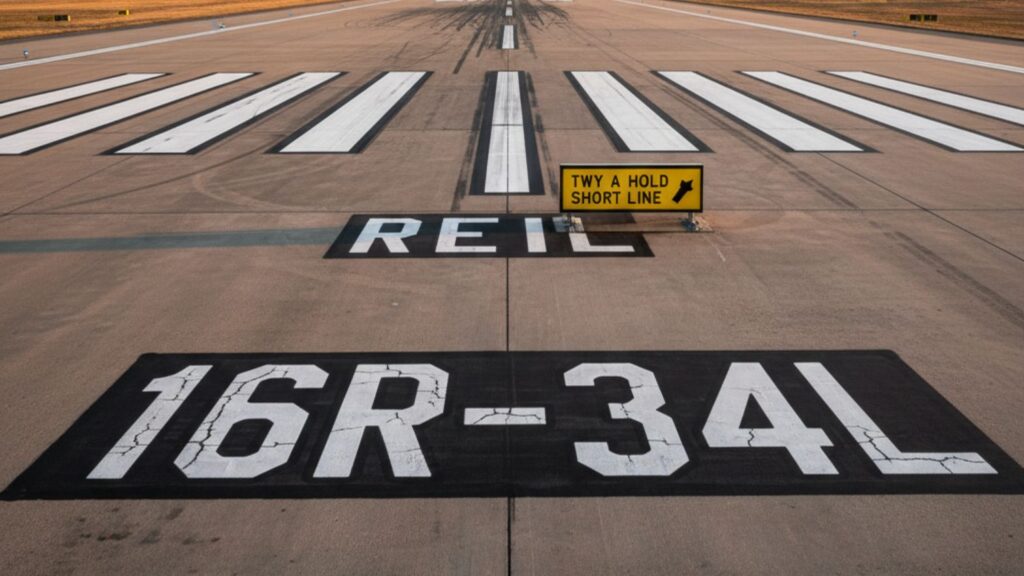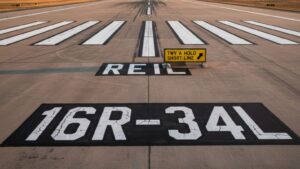Look up at the vast blue expanse. You might see a plane soaring past, a silver streak connecting continents. Inside that cockpit, a pilot is speaking. They are talking to the ground, to other aircraft and to their crew. What is truly remarkable is that a pilot flying over the Arabian Sea, speaking to air traffic control (ATC) in Mumbai, is using the exact same professional language as a pilot descending into London’s Heathrow or navigating the busy airspace above New York.
This is not simply a matter of knowing a few common phrases. It is a highly structured, mandatory linguistic system, a global pact that ensures the safety of everyone travelling by air. This common language, known as Aviation English, with its rigid structure of standardised phraseology, is the real universal language of the skies.
The Genesis of Global Clarity: Why English?
The journey to this universal language began in the mid-20th century. As air travel expanded rapidly after World War II, international flights became the norm, bringing pilots and air traffic controllers from dozens of different nations into constant communication. Language barriers quickly became a serious safety issue. The tragic collision of two Boeing 747s in Tenerife in 1977, partially attributed to communication ambiguity and a non-standard use of language, underscored the desperate need for absolute clarity.
The International Civil Aviation Organisation (ICAO), a United Nations body, stepped in. They designated English as the official language for international air-ground radiotelephony communications. English was a natural choice, given the dominance of English-speaking countries in the early days of aviation technology and manufacturing. This was not just a suggestion; it became a global safety standard. All pilots and air traffic controllers involved in international operations must demonstrate proficiency in Aviation English at a minimum ICAO Operational Level 4. This level is a specific, rigorous measure of one’s ability to communicate effectively and clearly, especially when the situation is not routine.
More Than Grammar: The Standardised Phraseology
The language is not merely standard English. It is a highly specific dialect built around standardised phraseology. Every instruction, every acknowledgement and every critical piece of information has a designated phrase. This precision eliminates the ambiguity that exists in everyday conversation.
Consider a simple affirmation. In general English, one might say ‘yes’, ‘okay’, ‘sure’ or ‘I got it’. In aviation, there are only two acceptable words in most contexts: ‘Affirm’ (which means ‘yes’) and ‘Roger’. But even ‘Roger’ has a specific, limited meaning. It means ‘I have received all of your last transmission.’ It does not mean ‘yes’ or ‘I will comply.’ For compliance, the pilot must say ‘Wilco’ (short for ‘will comply’). This meticulous separation of meaning prevents potentially disastrous confusion.
If ATC instructs a pilot to ‘climb and maintain flight level three-three-zero’ (33,000 feet), the pilot must read back the entire instruction: ‘Climb and maintain flight level three-three-zero, [Aircraft Call-sign].’ This readback is a mandatory redundancy, confirming that the message was received correctly. If a word is misspelt, the speaker uses the mandatory word ‘Correction’ before providing the right term.
The Phonetic Foundation: Zero, Niner and the Alpha-Bravo Code
An essential element of this communication is the NATO Phonetic Alphabet: Alfa, Bravo, Charlie, Delta and so on. This is used to spell out aircraft registrations, navigational waypoints and runway numbers. Why? Because radio transmission quality can be poor, and letters like ‘B’, ‘D’, ‘E’, ‘G’ and ‘P’ sound virtually identical over a static-filled frequency. Spelling a call-sign like VT-XYZ as ‘Victor Tango X-ray Yankee Zulu’ ensures absolute comprehension, regardless of accent or background noise.
Numbers also undergo a specific transformation. The numeral ‘nine’ is always spoken as ‘Niner’ to avoid confusion with the German word ‘nein’, which means ‘no’, and to ensure it is not mistaken for ‘five’ in poor radio conditions. ‘Three’ is pronounced as ‘Tree’, and ‘five’ as ‘Fife’. Even a simple frequency, say 123.45 MHz, is spoken as ‘one two three point four five’. Every digit is pronounced separately for clarity. This is the level of detail built into the linguistic framework.
The Weight of Stress and Non-Routine Talk
In high-stress situations, like an emergency, the reliance on this universal language becomes a matter of life and death. The international distress signal ‘Mayday’ (from the French m’aider—’ help me’) and the urgency signal ‘Pan-Pan’ (for a serious but non-imminent situation) are universally recognised calls. The required protocol for transmitting these is rigid: state the call three times, provide the call-sign, nature of the emergency and intentions. No one has time for flowery language or regional expressions when immediate help is required.
However, the ICAO rules also acknowledge that non-routine situations require non-standard communication. This is where a pilot’s core English language proficiency, beyond the standard phrases, is tested. If a wing is on fire, there is no ICAO phrase for it. The pilot must revert to clear, simple, concise plain English, a skill that the ICAO proficiency test is designed to measure. This is where the true universality of the language comes to the fore. It must function seamlessly between the structured, almost robotic, efficiency of standard calls and the critical spontaneity of an emergency description.
Conclusion: The Global Tapestry of the Air
The cockpit may feel like a small, enclosed space, but it is the nucleus of a worldwide communications network. Pilots do speak a universal language, not out of convenience, but out of necessity and a shared commitment to safety. This language is not organic; it is engineered for clarity, stripped of all colloquial baggage and reinforced by mandatory training and testing. It is a quiet, powerful testament to global cooperation, where the difference between ‘Roger’ and ‘Wilco’ can be the difference between a smooth journey and a major incident. The next time a jetliner passes overhead, remember that the silver bird is being guided by a common voice, a single, clear, powerful language that truly spans the world.










